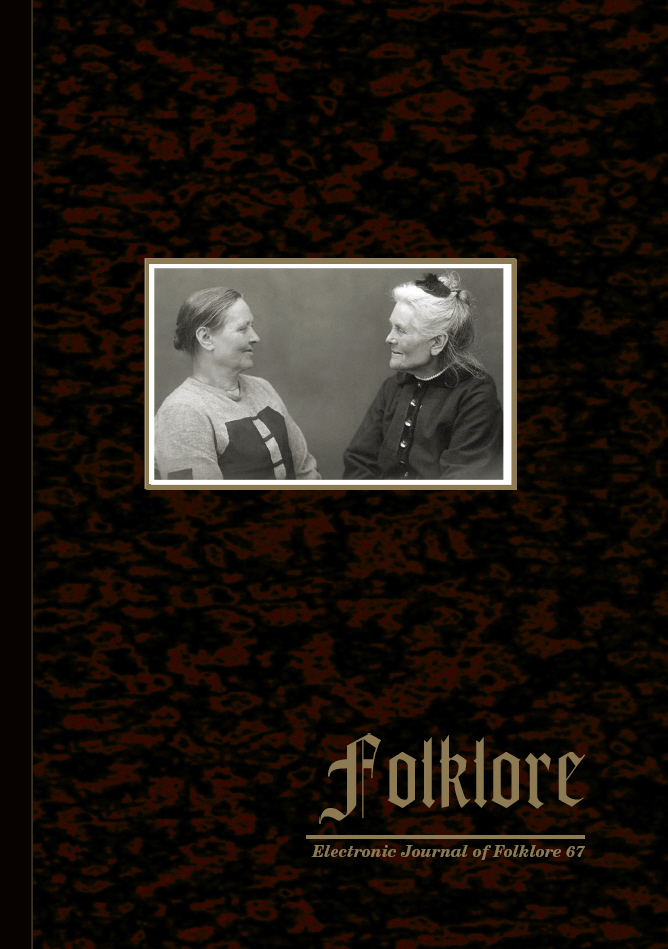Mari and Marie: Performativity and Creativity of Two Estonian Singers in the Late Nineteenth Century
Mari and Marie: Performativity and Creativity of Two Estonian Singers in the Late Nineteenth Century
Author(s): Janika OrasSubject(s): Cultural history, Customs / Folklore, Cultural Anthropology / Ethnology, Culture and social structure , 19th Century
Published by: Eesti Kirjandusmuuseum
Keywords: anthropology of aging; Estonian regilaul; Kalevala-metric poetry; modernisation; oral tradition; newer end-rhymed song; performance registers; performativity; female singers;
Summary/Abstract: One of the results of the rapid modernisation of Estonian society in the second half of the nineteenth century was the change in singing culture: the older singing style, regilaul, which represents the Kalevala-metric song tradition, was gradually replaced by the newer end-rhymed singing style. The article analyses this change by focusing on the performances of two female singers from central Estonia, representatives of different generations. The main research sources are folklore texts and memoirs written down by the younger singer Marie Sepp, featuring, among others, a female singer from the previous generation, Mari Pärtens. The performativity of the singers is displayed in a cross-section of the changing performance arenas and registers which are related either to the older or the newer singing style. The article discusses the individuality of the two singers, as well as manifestations of gender, age, artistic creativity, and the historical socio-cultural context in their performativity.
Journal: Folklore: Electronic Journal of Folklore
- Issue Year: 2017
- Issue No: 67
- Page Range: 143-170
- Page Count: 28
- Language: English

